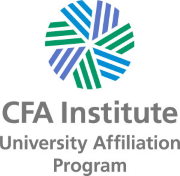Computational Finance
Course Name: Computational Finance
Teachers: Nikolaos Englezos
School: Finance and Statistics
Department: Banking and Financial Management
Level: Undergraduate
Course ID: ΧΡΥΧΜ01 Semester: 5th and 7th
Course Type: Compulsory / Scientific Expertise / Skills Development
Prerequisites: –
Teaching and Exams Language: Greek
Course Availability to Erasmus Students: Yes (in Greek)
Course webpage: –
Specific Teaching Activities |
Weekly Teaching Hours |
Credit Units |
Lectures |
4 |
6 |
Course Content
The following sections will be presented:
• Introduction to Matlab: Matrices, Basic Functions, Programming (M-files), Diagrams.
• Binomial Model Simulation: Construction of Binomial Tree, Pricing of European and American Options.
• Monte Carlo Simulation: Generating Random Numbers, Expected Value Estimation, Pricing of European Options, Number of Replications.
• Variance Reduction Techniques: Antithetic Sampling, Control Variates, Common Random Numbers – Estimation of the Greeks.
• Hedging Strategies: Simulation of Geometric Brownian Motion, Stop-Loss Hedging, Delta Hedging.
• Finite Difference Method: Difference Quotients, Construction of Grid, Boundary Conditions, Explicit and Implicit Methods in Pricing European Options, Connection with Trinomial Tree.
• Portfolio Theory: Construction of Efficient Portfolios, Efficient Frontier under Budget Constraints.
Teaching Results
This course is an introduction to the numerical techniques used widely by applied economists in finance. Its main goal is to bridge the gap between financial theory and computational practice. This is accomplished with the use of the programming language Matlab which is a powerful numerical computing environment for financial applications.
Upon successful completion of the course, the students will be able to
• know and understand the capabilities and functions of the programming language of Matlab.
• develop numerical algorithms in Matlab for pricing financial derivatives with the simulation method of Monte Carlo.
• employ variance reduction techniques for the numerical improvement of simulation methods of random numbers.
• develop numerical lattice algorithms in Matlab for pricing financial derivatives with the method of Binomial Tree.
• solve numerically partial differential equations in Matlab for pricing financial derivatives with the method of Finite Differences.
• construct numerical paths of Geometric Brownian Motion and simulate dynamic risk hedging.
• perform directly In Matlab portfolio optimization with or without constraints.
Skills
• Search for, analysis and synthesis of data and information by the use of appropriate technologies.
• Adapting to new situations.
• Decision-making.
• Individual/Independent work.
• Group/Team work.
• Working in an interdisciplinary environment.
• Introduction of innovative research.
• Critical thinking.
• Development of free, creative and inductive thinking.
Teaching and Learning Methods - Evaluation
Lecture: Lecturing and practicing in the P/C lab of the Department.
Use of Information and Communication Technologies: • Use of lecture slides via PowerPoint.
• Use of P/C lab of the Department for practical exercises.
• Communication with students via e-mail.
Teaching Analysis:
Activity |
Semester Workload |
Lectures |
26 |
Laboratory Practice |
26 |
Projects |
49 |
Studying |
49 |
Total |
150 |
Student Evaluation:
I. Written exam (90%) that includes:
• Questions on theory.
• Explicit description of algorithmic methods.
• Development of computational algorithms for the numerical solution of problems.
II. Coursework (10%) that includes the development and execution of computational algorithms for the numerical solution of problems, subject to the material taught in class.
This is a 2-hour written exam. The individual evaluation grades are explicitly written next to each question.
Recommended Bibliography
- Paolo Brandimarte, Numerical Methods in Finance and Economics: A Matlab- Based Introduction, 2nd Edition, John Wiley & Sons, New York, 2006.
- Cleve B. Moler, Αριθμητικές Μέθοδοι με το MATLAB, Εκδόσεις Κλειδάριθμος ΕΠΕ, Αθήνα, 2010.




